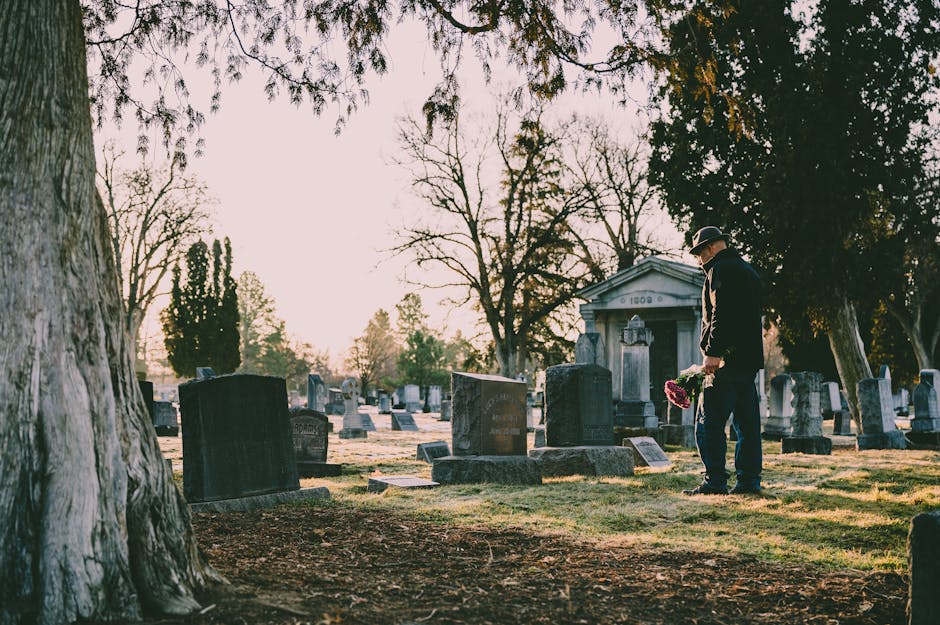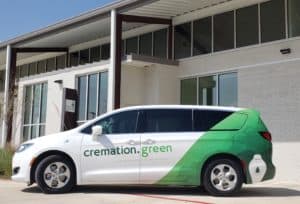Introduction to Flame Cremation and Traditional Burials
When we talk about what happens after someone passes away, two common options come to mind: flame cremation and traditional burials. Each has its own rituals and impacts, both emotionally and environmentally. Flame cremation involves reducing the body to ashes using high heat in a specialized chamber. It’s a process that’s been around for thousands of years but has gained popularity in modern times as space for burials becomes limited and as people search for more sustainable options. On the flip side, traditional burials involve placing the body in a casket and then into a burial plot. This method has deep cultural and religious roots, linking us to generations before. However, it requires land, and the materials used for caskets and embalming can have environmental impacts. Understanding these options is the first step in making a choice that aligns with your values and wishes.
Understanding Flame Cremation: The Process and Environmental Impact
Flame cremation, often just called cremation, transforms the body into ashes using intense heat. It’s a straightforward process. First, the body is placed in a combustible coffin and then into a cremation chamber. Here, temperatures soar to 1,400 to 1,800 degrees Fahrenheit, turning the body to ash in about 2 to 3 hours. What you get afterwards are the ashes, which families often keep or scatter in a meaningful place.
Now, about its environmental impact. It’s got its ups and downs. On the upside, cremation uses less land than traditional burials. No need for a burial plot or a headstone. This means less land disturbed and preserved natural landscapes. Also, cremation eliminates the need for embalming chemicals, which can leach into the ground in traditional burials.
But, it’s not all green and clean. Cremation burns fossil fuels, releasing carbon dioxide (CO2) and other pollutants into the atmosphere. It’s estimated that cremation of a single body releases about 540 pounds of CO2. Plus, there are concerns about mercury emissions, mainly from dental fillings.
In short, while flame cremation has its environmental perks, especially in saving land, it’s not entirely harm-free. It’s like choosing the lesser of two evils when weighing it against traditional burials.
Traditional Burial Practices: An Overview and Their Ecological Footprint
Traditional burials have been a mainstay for centuries, serving as a way to honor those who have passed. However, they come with a significant environmental footprint that’s hard to ignore. The process involves embalming the body with chemicals, using a casket often made from wood or metal, and then burying it in a plot. This method can disrupt local ecosystems and use up valuable land resources. The chemicals, including formaldehyde and other solvents, can seep into the soil and water, posing risks to wildlife and plant life. Wood caskets contribute to deforestation, while metal caskets and concrete vaults, often used to encase the casket, do not break down, leaving a lasting impact on the earth. This method, while traditional, raises concerns for those looking to minimize their environmental footprint.
Carbon Footprint Comparison: Flame Cremation vs Traditional Burial
When we talk about our final goodbye, few of us consider the environmental impact. Yet, flame cremation and traditional burials carry significantly different carbon footprints. Flame cremation, despite its use of natural gas and the resulting emissions of carbon dioxide, stands as a lesser evil when we weigh in the harsh reality of traditional burials. Traditional burials often involve embalming fluids, which are toxic, and the consumption of hardwood and metal for caskets—not to mention the ongoing environmental cost of maintaining burial sites. While flame cremation does emit CO2 into the atmosphere, studies show it’s considerably less over time compared to the land use, resource consumption, and pollution associated with traditional burials. The choice may seem grim, but for those looking to minimize their final impact on Earth, understanding these differences is crucial.
Land Usage: Burial Grounds vs Crematoriums
Traditional burials take up a lot of space. Each grave requires a plot of land, and over time, cemeteries expand, consuming acres. In contrast, crematoriums need significantly less land. They can serve thousands without the need for expansion. Think about it; a single building for cremations versus a sprawling cemetery. Plus, land once used for burial can’t easily be repurposed. Cremation offers a way to save our precious land resources for the living or for nature. It’s a clear choice when considering our planet’s future; crematoriums are the way to go.
Chemical and Resource Consumption in Traditional Burial Methods
Traditional burials consume a lot of resources and chemicals. First off, there’s the casket, often made of wood, metal, or a mix of both. To make these, trees must be cut down, and metals need to be mined and processed. This alone impacts the environment significantly. Then, think about the embalming process, where chemicals like formaldehyde are used to preserve the body. These chemicals can seep into the earth, potentially affecting soil and groundwater. Besides, each burial takes up land space that could otherwise be used for natural habitats or more eco-friendly purposes. In short, traditional burials demand considerable amounts of chemicals and resources, leaving a larger environmental footprint compared to alternative methods like flame cremation.
The Pros and Cons of Flame Cremation from an Eco-Friendly Perspective
When talking eco, flame cremation offers a mixed bag. Let’s break it down. Pros? Less land use. Unlike burials that demand plots, cremations don’t hog real estate. Energy-wise, modern crematories are getting more efficient, trimming down the carbon footprint. Plus, it dashes the need for embalming chemicals or hardwood coffins, both thumbs up for Mother Earth. But cons? Can’t ignore them. Cremation isn’t perfect. It guzzles fossil fuels and spits out carbon dioxide, contributing to air pollution. And those mercury fillings in teeth? They turn into airborne mercury, a no-no for air quality. The balance? It leans cleaner than traditional burials, especially if you pick a greener crematorium or go for biodegradable urns. Ultimately, it’s about striking the right environmental compromise.
How Traditional Burials Affect Biodiversity and Soil Health
Traditional burials might not always be the first thing you think about when considering environmental impact. Yet, they significantly affect the local biodiversity and soil health. Here’s the straightforward scoop: when we choose traditional burials, we’re essentially burying not just our loved ones but also a host of materials that don’t play well with the earth. This includes metal from caskets and various embalming chemicals. These chemicals, folks, they’re no friends to the soil. They can leech into the ground, messing with the soil’s natural chemistry. This doesn’t just affect the dirt; it’s a chain reaction. The altered soil chemistry can make it hard for plants to grow, which in turn affects the local wildlife that depends on those plants for food and habitat. It’s like when you throw a pebble into a pond and watch the ripples spread out, only it’s not as peaceful or natural. So next time the topic comes up, remember that traditional burials have more than a momentary impact. They leave behind a legacy that affects our planet’s delicate balance.
Shifting Funeral Trends: Eco-Conscious Choices
More folks today are thinking hard about their impact on the planet, even when it comes to their final send-off. There’s a clear shift towards eco-conscious funeral choices. Traditional burials, while still common, aren’t easy on Mother Nature. They often use embalming chemicals, metal caskets, and concrete burial vaults, all of which can harm the environment. On the flip side, flame cremation, although using a fair bit of gas and releasing carbon emissions, can be seen as a greener option when you opt for energy-efficient crematoria and consider the smaller physical footprint left behind.
But, the story doesn’t end there. There’s a growing interest in even greener options. Biodegradable urns, tree pod burials, and natural burials without harmful chemicals or non-degradable materials are catching eyes. These choices show a deep respect for the earth, aiming to let our final act be one of giving back to nature, rather than taking from it. So, while traditional methods are still in play, more people are picking alternatives that align with their eco-conscious values, highlighting a significant shift in how we view our last goodbye.
Conclusion: Making Environmentally Responsible Decisions in Mourning Practices
When it comes down to it, choosing between flame cremation and traditional burials is about what sits right with your beliefs and your commitment to the environment. Flame cremation, with its lesser land use and reduced chemical emissions, aligns closely with eco-friendly principles. On the other hand, traditional burials, especially those that lean towards green burials with biodegradable materials and no chemical preservatives, also present a viable option for those wishing to minimize their environmental footprint. It’s crucial to weigh the pros and cons of each based on your environmental values. By making informed decisions, we honor our loved ones while also respecting our planet. Remember, every choice matters in our journey towards a more sustainable world.







